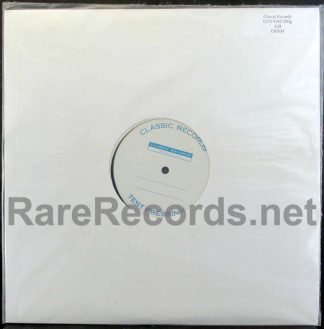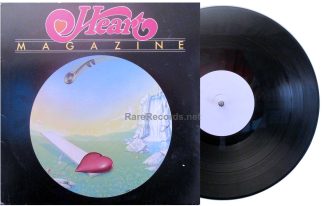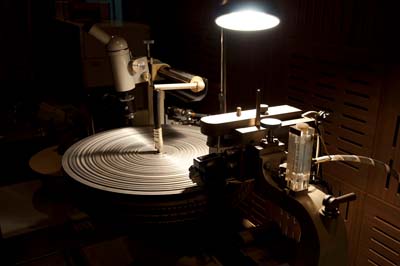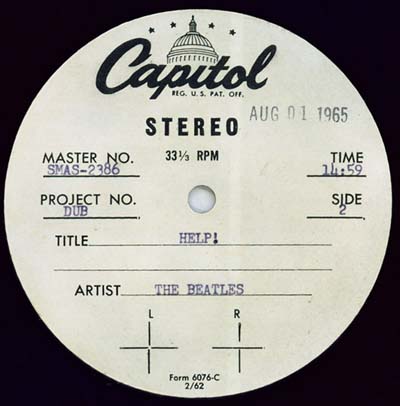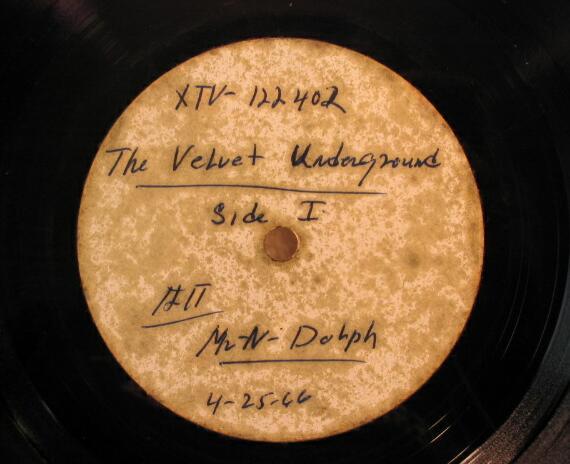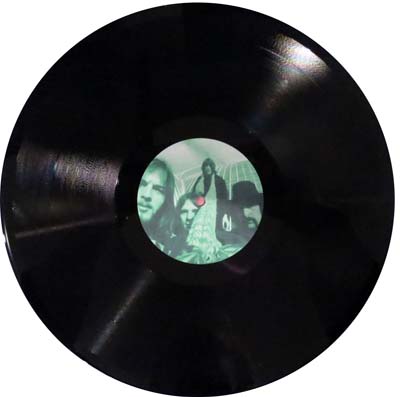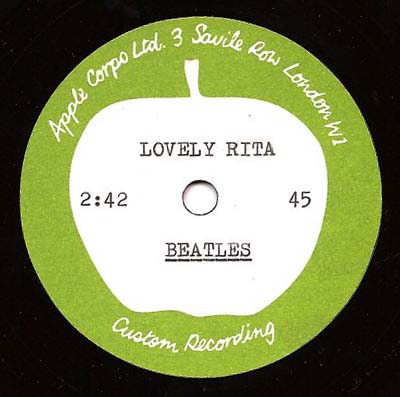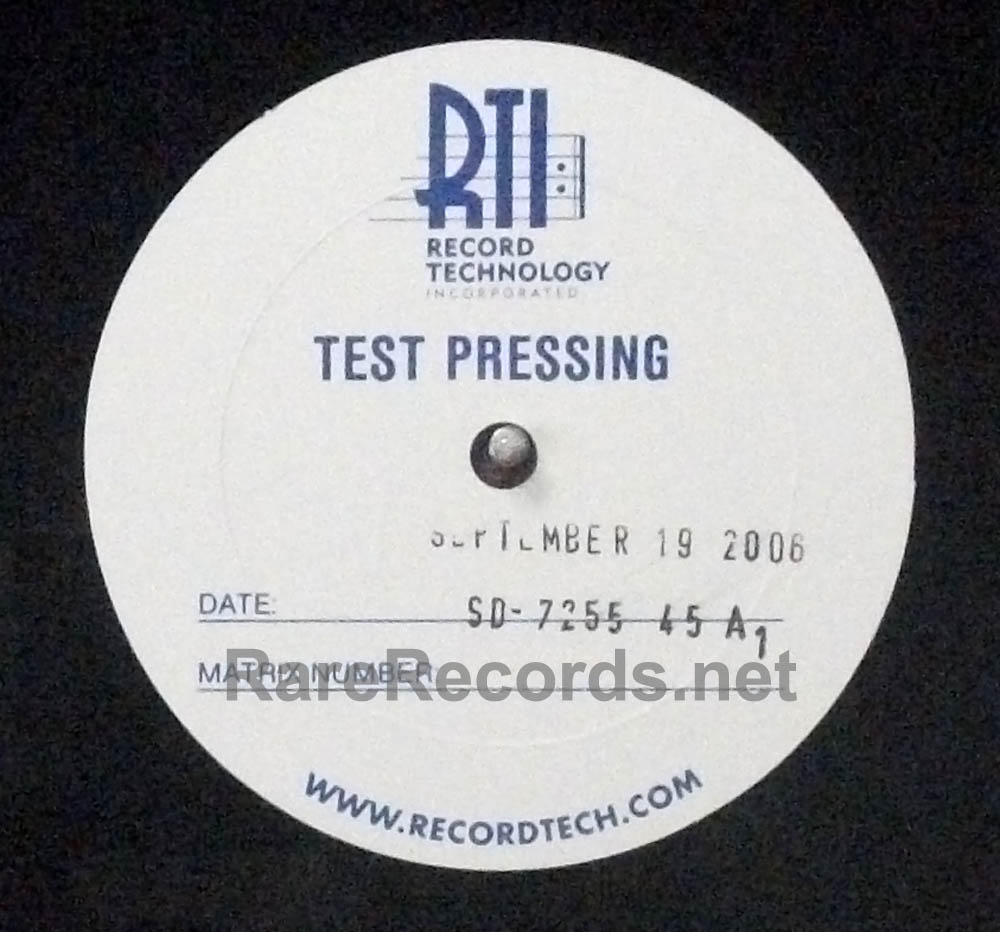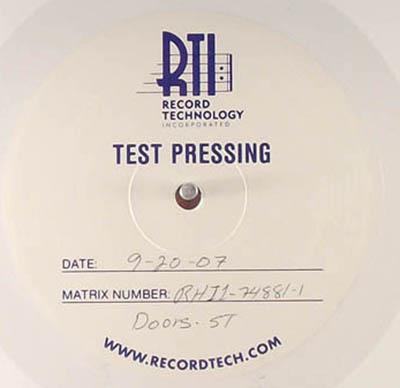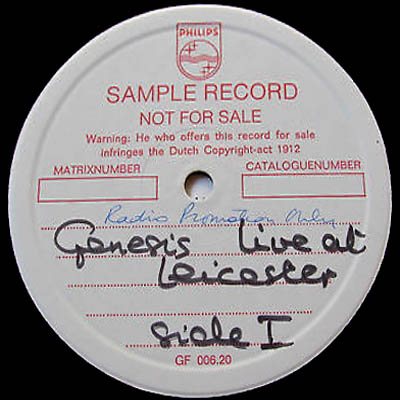Bootleg Records – What Are They?
Bootleg records have been sold for decades, but a lot of collectors don’t know much about them, and many have never seen one. In the strictest sense, a bootleg record is an album that has been pressed and sold by a third party who has no relationship with the recording artist or the artist’s record company and which has been released with neither the knowledge or approval of either. Bootleg records may be released as a tribute to the artist by fans, but it’s most common for them to be made with the intention of selling them as for-profit products.

The term ROIR is sometimes used to describe bootleg records with the term meaning, “Records Of Indeterminate Origin.” This is an accurate description, as the records themselves rarely accurately list who manufactured them or where they were made.
There is a good reason for this; bootleg records have long been illegal in most western countries.
In this article, we’ll discuss the definitions and origins of bootleg records, provide examples of some of the better known ones, and explain why bootleg records hold interest for record collectors.
You can browse our selection of unauthorized/live/ROIR records here.
Browse by Category
Click any of the links below to jump to each category:
Definition of Bootleg Records
Bootleg Records History
Types of Bootleg Records
Packaging
Trademark of Quality Label
Other Bootleg Record Labels
Artist and Record Company Responses
Conclusion
You can browse our selection of unauthorized/live/ROIR records here.
Featured Products
-
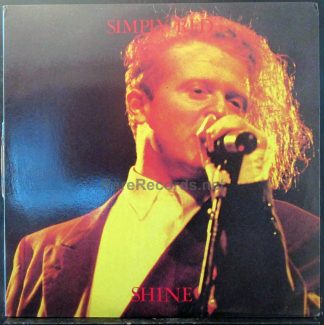
Simply Red – Shine Japan live 2 LP set
$99.00Free US shipping! A copy of the Japanese double live album Shine by Simply Red.Add to cart -

Fleetwood Mac – The Rockhoppers Live 1976 rare live LP
$60.00A scarce copy of the 1970s live album The Rockhoppers Live 1976 by Fleetwood Mac.Add to cart -
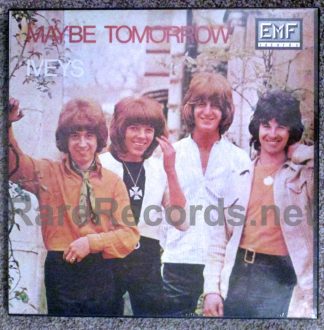
Iveys (Badfinger) – Maybe Tomorrow sealed 1987 U.S. numbered box set with T-shirt
$395.00Free U.S. shipping! An ultra rare still sealed copy of the numbered limited edition 1987 box set reissue of Maybe Tomorrow by the Iveys, including a four-color T-shirt.Add to cart -
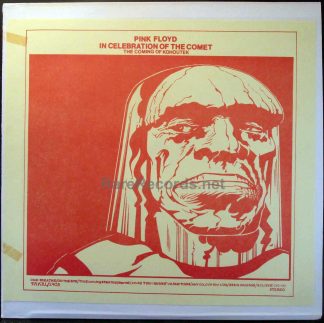
Pink Floyd – In Celebration of the Comet U.S. live LP
$150.00Free U.S. shipping! A copy of the U.S. live LP In Celebration of the Comet by Pink Floyd.Add to cart
What Are Bootleg Records?
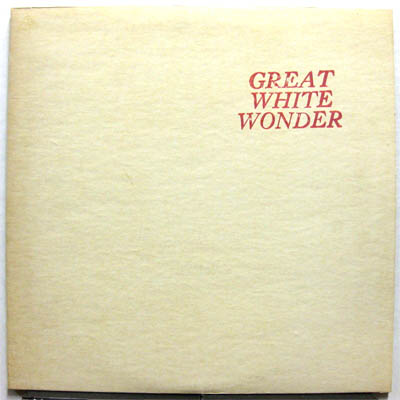
Bootleg records are singles or albums that have been pressed and distributed with neither the knowledge or permission of the recording artist or their record company. Bootleg records have traditionally been sold to earn a profit for those who manufacture them and to fill voids in the marketplace by providing recorded material by popular artists that is not available through legitimate, licensed recordings.
While the manufacture of bootleg recordings is illegal in most Western countries, copyright laws in the 1960s and 1970s were less strict than they are today, and at one time, bootleg records were so common as to be found in the bins in chain record stores and major department stores.
Most bootleg records contain either previously unreleased studio material or live, “in concert” recordings. Occasionally, bootleg records have compiled rare or otherwise hard to find legitimately released material, though such compilation albums comprise a small percentage of the bootleg market. Historically, most bootleg records have been live recordings, as those are the easiest type of unreleased material for manufacturers to obtain.
The term “bootleg records” is sometimes applied to any unauthorized record, including counterfeit records, which are copies of legitimate releases that are created to fool the buyer into thinking that they are buying an authorized release, and pirate records, which are unauthorized pressings that contain previously released legitimate recordings.
Strictly speaking, the term “bootleg records” only applies to unauthorized releases of previously unreleased material and not pirate or counterfeit pressings. (new window)
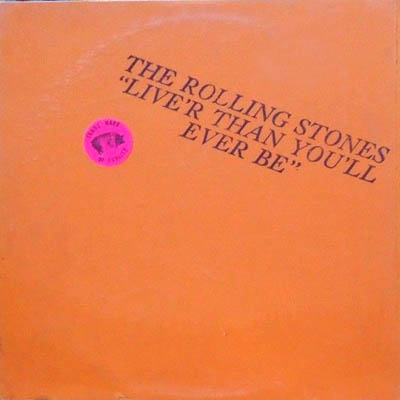
Bootleg records have been sold since at least the 1930s; there are numerous 78 RPM records in existence that are unauthorized. It’s quite possible that there were also bootleg recordings available in the cylinder record era, though record keeping from the early 20th century regarding copyright is a bit vague.
The term “bootleg records” is most commonly used, however, to describe unauthorized pressings issued starting in the late 1960s, when various individuals discovered that the copyright laws then in existence did not prohibit anyone from releasing previously unreleased live or studio recordings by any artists of their choosing.
The first of the modern bootleg records was a two record set of previously unreleased music by Bob Dylan. The album was originally released without a title and issued in a plain white cover. This album became known as “Great White Wonder,” and was soon released under that title, with the title rubber-stamped onto an otherwise plain white cover.
Sales figures are unknown, but the album is believed to have sold upwards of ten thousand copies. Of course, with copyright laws not applying to such releases, Great White Wonder soon became copied by other bootleg manufacturers, and the album has since appeared in a multitude of configurations, on black vinyl and colored vinyl, and with and without properly printed covers.
Shortly thereafter, an album by the Beatles called Kum Back appeared in stores, containing material from the then-unreleased Let It Be recording sessions. At this time, numerous FM radio stations around the country began playing both Kum Back and Great White Wonder on the air, and this helped sales tremendously.
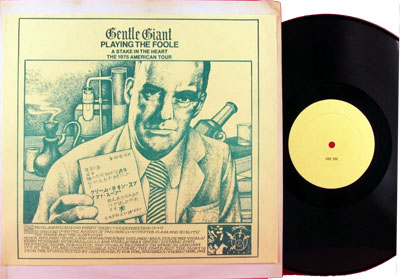
A third title that attracted a lot of attention at that time was a release by the Rolling Stones called Live R Than You’ll Ever Be, which contained recordings from the band’s 1969 American tour. This album, in a rubber stamped white cover, sold so well that it encouraged the Rolling Stones’ record company to release a legitimate live album from the tour in order to take advantage of what was obviously large market demand.
It may seem odd today, but at the time, these three titles and a few others that popped up shortly thereafter were often available in mainstream record stores. We know a collector who bought his copy of Kum Back at a Sears store in Texas when the album was first released.
Over the next few years, hundreds, if not thousands, of bootleg records appeared on the market from a variety of manufacturers.
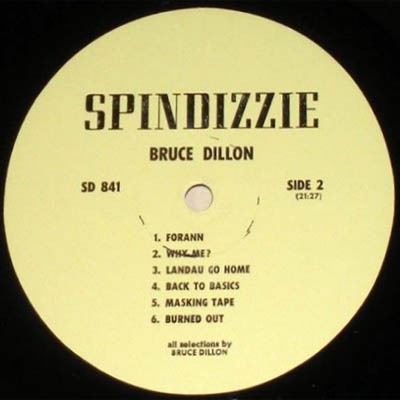
In the earliest days of bootleg records, most releases had plain covers and plain labels. This was due to the fact that record companies who were pressing these albums were reluctant to put printed labels on the discs, due to their dubious legality. Similarly, print shops that printed album covers for record pressing plants weren’t too eager to manufacture covers for albums which were, even then, technically illegal.
Over the next decade, bootleg records appeared on the market with blank labels, printed labels that correctly listed the name of the artist and song titles, and “fake” labels that listed a nonexistent artist and fabricated song titles. These labels likely came from manufacturing plants that were under contract to major record companies; if someone from a major label happened to stop by the pressing plant, they wouldn’t pay much attention to an album by Bruce Dillon, even though that album might actually play music by Fleetwood Mac!
Bootleg records generally fall into three categories:
- Live recordings – Live, “in concert” recordings probably comprise 80% of the market for bootleg records. In the late 1960s and early 1970s, these tapes were usually acquired by individuals who managed to sneak tape recorders into concert halls in order to surreptitiously record the performances. These so-called “audience tapes” are of varying quality, with some being quite good and others bordering on the unlistenable.Many bootleg records from the mid-1970s were sourced from FM broadcasts, as radio stations often had access to live recordings, including those from syndicated radio programs such as the King Biscuit Flour Hour. The quality of these recordings is generally excellent and virtually the equal of authorized live albums.Other live recordings have been obtained from crew members who worked on the mixing console at the concerts, as many artists have long recorded most or all of their performances.These recordings are usually intended for the artists’ own use, but sometimes employees made copies of them and made those available to bootleggers.
- Previously unreleased studio recordings – While previously unreleased studio recordings comprise a relatively small percentage of bootleg albums, they’re highly sought after by collectors, who are often interested in obtaining everything they can by artists they follow. Such recordings are relatively hard to obtain, and usually come from record company employees, either directly or indirectly.The Bob Dylan Great White Wonder set, the Beatles Kum Back and the Beatles Ultra Rare Trax series are good examples of bootleg records that contain unreleased studio material. In the case of the Ultra Rare Trax series, the quality of the recordings was the equal of commercially released Beatles albums, as the source material reportedly came directly from the vaults of their own record company.Another Beatles title, Sessions contained recordings for a planned Beatles album of songs they’d recorded but never released that was to have been released in 1985. For various reasons, the project was canceled, but cassette tapes of the unreleased album, made for internal record company use, found their way into the hands of bootleggers, and shortly thereafter, an unauthorized album called Sessions appeared on the collector market.
- Collections of previously released (but rare) material – While the market for bootleg records usually seeks out previously unreleased material, a few titles have included rare, previously released recordings. These might be singles that were long out of print, obscure B-sides of singles, or recordings that were previously issued only as promotional releases that were not intended for sale to the public.Two examples of such releases would The Complete Christmas Collection by the Beatles, which contained material that was previously only available on records sold through the Beatles Fan Club, and The Paul Simon Solo Album, which was a reissue of a 1965 LP by Paul Simon that was never released in the United States.
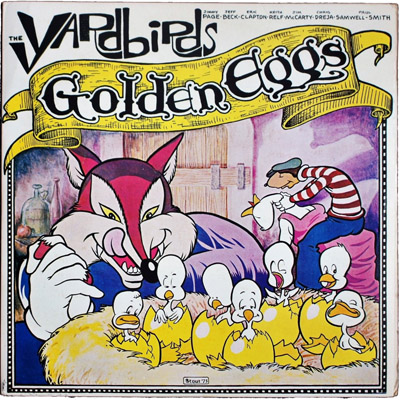
While packaging of bootleg records was initially minimalist, with plain white covers and blank labels, competition quickly emerged in the industry and that led to better quality, if still untraditional, packaging. While many covers still had rubber stamped titles, those covers were often available in color. Printed covers soon followed from a few manufacturers, and some manufacturers, notably the Trademark of Quality (TMOQ) label and K&S records, pressed most of their records on colored vinyl.
Printed covers and colored vinyl helped spur sales, especially since few commercially available records in the early 1970s were available on colored vinyl. Albums that had rubber stamped covers began to include printed paper inserts that listed the artist, album title and song titles (and sometimes, the source of the material inside.)
A few titles had somewhat more elaborate packaging. When the company that printed the hardcover tour book for Blind Faith’s only U.S. tour found themselves with thousands of leftover programs at the end of the tour, a bootlegger bought a number of them and packaged them in a box along with a live recording from that tour.
A 10 disc package of Beatles outtakes from the Let It Be sessions was released in the mid-1980s, with every one of the discs on colored vinyl and with the entire set packaged inside a box that resembled those in which theatrical films are shipped. A late 1980s Led Zeppelin set called The Final Option contained 70 records, all on colored vinyl, and was packaged inside a heavy acrylic box.
These sorts of packages are unusual; most of the bootleg records made in the 1970s had simple covers and paper inserts. Most of the titles released in the 1980s had printed covers, though many still included either blank labels or labels with fake information.

As the market for bootleg records grew in the early 1970s, a few manufacturers decided that establishing a brand identity might be good for business. While a number of companies attempted to do so, perhaps the most famous of them was the Trademark of Quality label, which is often abbreviated as TMOQ (or less frequently, TMQ.)
The Trademark of Quality label was started by two individuals from California, “Dub” Taylor and Ken Douglas They were the creators of the original Great White Wonder album, and they used their profits from that project to create their own record company.
Trademark of Quality releases included more than 150 titles that included live material, unreleased studio material and a few titles containing previously released (but hard to find) material. The earliest titles in the TMOQ catalog had rubber stamped covers (though most were color covers with stamped titles and paper inserts) and simple labels with either a number (“1” or “2”) or a drawing of a pig on them (either a “sideways” pig on early releases or the face of a pig smoking a cigar on later ones. A few later titles had printed covers with artwork by now-famous artist William Stout and printed labels that included both the name of the artist and song titles.
Most of the titles released by the Trademark of Quality label, which was in business from 1970 to 1976, were released on colored vinyl. Often, the first pressings of a given title were on colored vinyl, with subsequent pressings on regular black vinyl. For a few titles, a handful of copies were pressed on multicolored vinyl. Pressings on the Trademark of Quality label were highly regarded among collectors, as the vinyl itself was of good quality as was the source material of most of their releases.
The latter was an important factor, as the quality control in the overall manufacture of bootleg records was somewhat shoddy. Some companies used poor quality vinyl and often, equally poor quality recordings. Buyers rarely knew what they were going to get when they bought bootleg records, but most of the titles released by the Trademark of Quality label offered good recordings and good sound quality.
Because of this, the Trademark of Quality label is quite collectible today. Most of the material they released over the years has never been made available through legitimate sources, and 40+ years later, most of their titles are quite hard to find. Titles by major artists such as Bob Dylan, the Beatles, the Rolling Stones and Pink Floyd often sell for several hundred dollars, and some titles, particularly those on multicolored vinyl, occasionally sell for more than $1000.
Earlier pressings, with the large “1” or “2” on the labels, tend to sell for more money than the later pressings with either the sideways pig or the still-later “smoking” pig. The two different pig designs came about after Ken and Dub decided to part ways. Each of them continued to press titles under the Trademark of Quality name, but each used their own version of the label.
A label formed in the 1980s that was also known for high quality releases with finely printed color covers and colored vinyl records was a label from Europe called Swinging Pig. This name was an homage to the Trademark of Quality label.
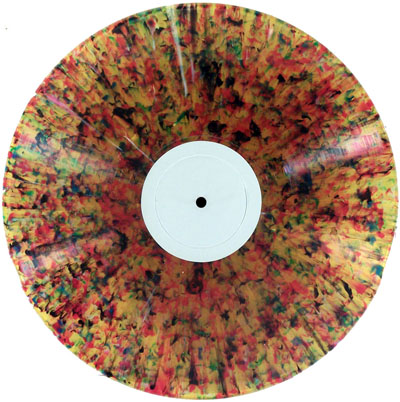
Ken Douglas of Trademark of Quality fame formed another well-known and highly regarded bootleg records label in the mid-1970s called The Amazing Korneyfone Record Label, or TAKRL, as it is known among collectors. This company released about the same number of titles as the TMOQ label.
TAKRL used printed, black and white covers, along with some that were plain white covers with printed paper inserts. As far as we known, all of the titles on the Korneyfone label were pressed on black vinyl.
Other labels of note in the 1970s were the Rubber Dubber label, which released a few titles with rubber stamped covers, Idle Mind Productions and K&S records. Both Idle Mind and K&S tended to use plain white covers with paper title inserts, though both released many titles on colored vinyl.
Many of the titles on the K&S label were pressed on beautiful, multicolored “splatter” vinyl. As this label was based in Canada, many of their records were reportedly seized by Customs officials during shipment to the United States. As a result, many K&S titles are quite hard to find today, though they’re sought out by collectors due to their attractive multicolored pressings.
Artist and Record Company Responses
Not surprisingly, record companies and the artists themselves were largely not happy about the exploding market for bootleg records, as they weren’t making money from their sales and they had no control over either content or quality. In a few cases, the official response to a bootleg release was to issue a similar legitimate one.
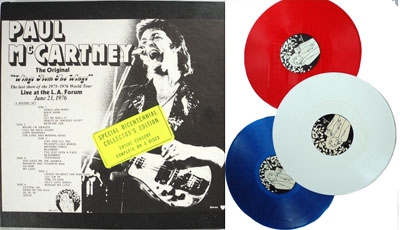
When Live R Than You’ll Ever Be was released in December, 1969, the Rolling Stones’ label, Decca Records, responded by releasing the official Get Your Ya-Yas Out not long after. Reportedly, the bootleg recording had sold in excess of 250,000 copies, though exact sales figures remain unknown.
An Elton John concert from November, 1970 that had originally been broadcast on FM radio was released by a number of bootleggers under a variety of titles. The official response was to simply release the concert legitimately, and the resulting album was Elton John’s first “official” live album titled 17-11-70 (or 11-17-70 in the United States.)
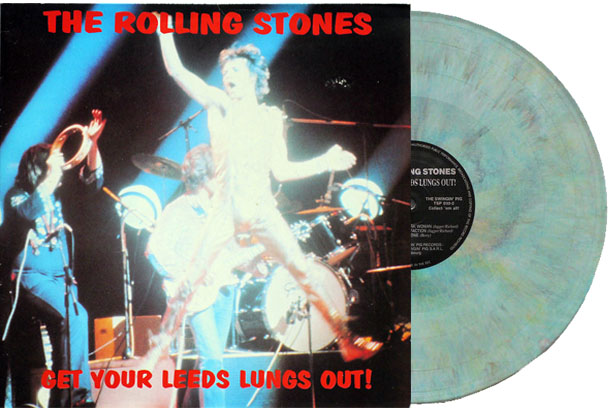
After Paul McCartney and Wings toured the United States in 1976 a three record set, pressed on red, white, and blue vinyl appeared with the title Wings From the Wings. This led to the official release of an authorized set, Wings Over America, which featured almost identical content.
The biggest response to the boom in the sales of bootleg records came from the United States Congress, which passed stricter copyright laws in 1976. This greatly reduced the number of bootleg records being produced, and numerous record stores stopped selling them, due to fear of being arrested for copyright violations.
While production of bootleg records declined in the United States in the 1980s, it increased in Europe, where copyright laws differ. A number of companies produced high quality pressings, often with color covers and colored vinyl, throughout the 1980s.
By the end of the decade, most manufacturing of bootleg records had come to a halt, as the industry moved towards compact discs.
Bootleg Records Conclusion
Bootleg records remain popular with collectors today, as they offer a number of things that draw collector interest. Most of them offer recorded material that is otherwise not available via the artists’ legitimate releases, and many of them were pressed on colored vinyl or even as picture discs, which are two features that always draw collector interest.
The Trademark of Quality label is collectible in its own right, and some titles are available from that label in a variety of configurations – black vinyl, colored vinyl, multicolored vinyl, and so on. Prices for bootleg records on that label that sold for as little as $4 when new now approach hundred, and sometimes even thousands, of dollars.
While not all record collectors are interested in bootleg records, and not all artists are represented by them, they remain an interesting area of record collecting.
You can browse our selection of unauthorized/live/ROIR records here.
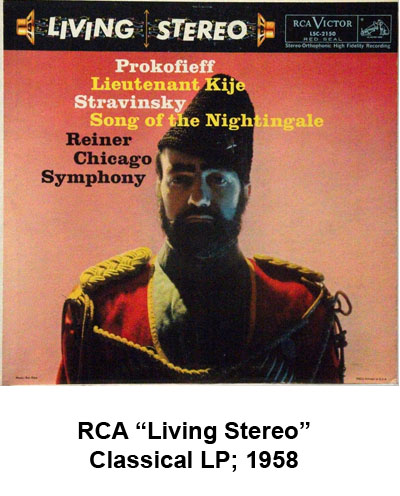 The term “audiophile” has a number of meanings; one definition we found was, “hi-fi enthusiast: somebody who has an enthusiasm for sound reproduction, especially high-fidelity music recordings.” That’s probably a good overall assessment; it’s someone who has an appreciate for how music sounds.
The term “audiophile” has a number of meanings; one definition we found was, “hi-fi enthusiast: somebody who has an enthusiasm for sound reproduction, especially high-fidelity music recordings.” That’s probably a good overall assessment; it’s someone who has an appreciate for how music sounds.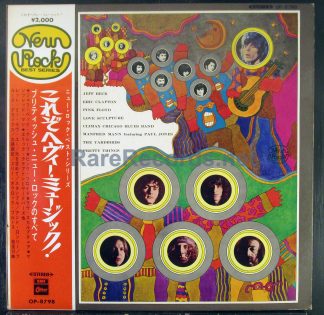
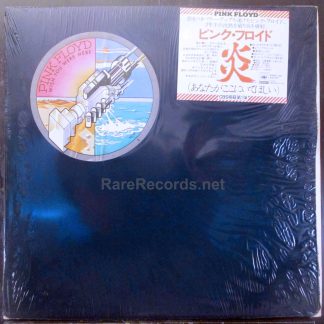

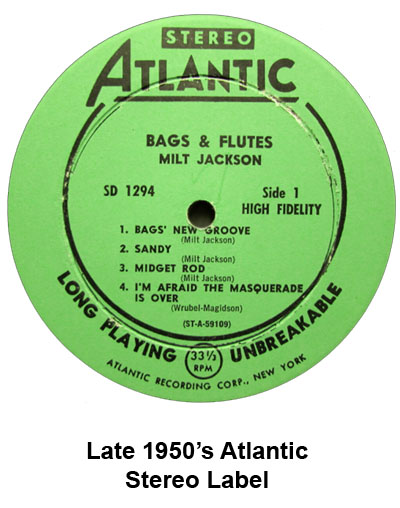 In the late 1950s and early 1960s, a few record companies, such as Columbia and Atlantic, spent a lot of time trying to make sure that their recordings sounded great and that their finished product was of a high quality. Their albums were well-recorded, with a sense of space and depth that truly immersed the listener in the experience.
In the late 1950s and early 1960s, a few record companies, such as Columbia and Atlantic, spent a lot of time trying to make sure that their recordings sounded great and that their finished product was of a high quality. Their albums were well-recorded, with a sense of space and depth that truly immersed the listener in the experience.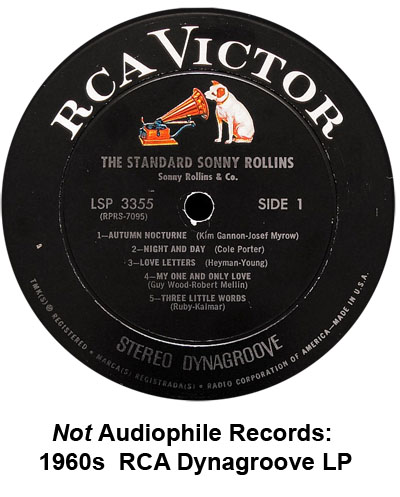 The price of stereo equipment began to drop as the 1960s wore on, and more people started buying stereo records. Their lower-priced equipment didn’t do as good a job of reproducing stereo sound, and RCA compensated for this beginning in 1963 when they introduced their “Dynagroove” process.
The price of stereo equipment began to drop as the 1960s wore on, and more people started buying stereo records. Their lower-priced equipment didn’t do as good a job of reproducing stereo sound, and RCA compensated for this beginning in 1963 when they introduced their “Dynagroove” process.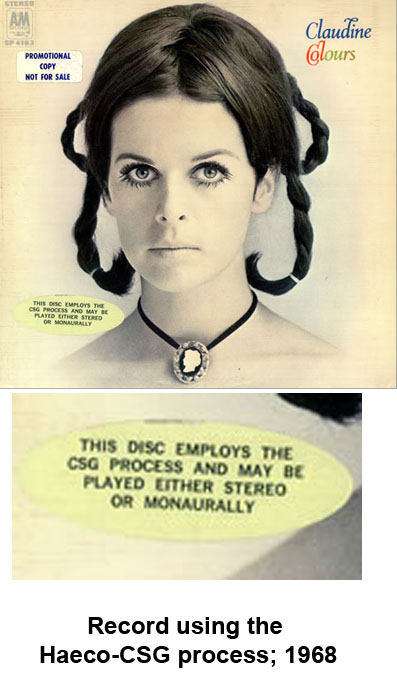 While this was great for record companies, as it allowed them to dramatically reduce manufacturing costs, it was terrible for consumers who appreciated high-quality sound, as the phase-cancellation process used by CSG resulted in “tinny” sounding records with relatively little bass.
While this was great for record companies, as it allowed them to dramatically reduce manufacturing costs, it was terrible for consumers who appreciated high-quality sound, as the phase-cancellation process used by CSG resulted in “tinny” sounding records with relatively little bass.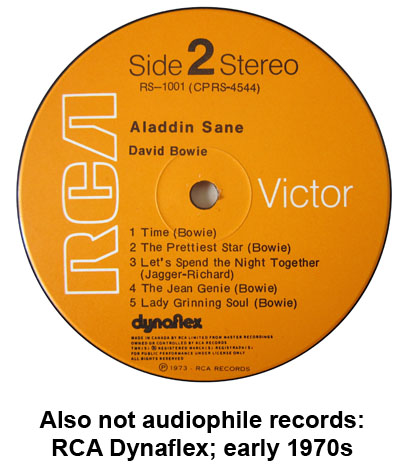 Perhaps the worst example of this were the records RCA pressed at this time. These were extraordinarily thin pressings were so thin that you could almost fold them in half.
Perhaps the worst example of this were the records RCA pressed at this time. These were extraordinarily thin pressings were so thin that you could almost fold them in half.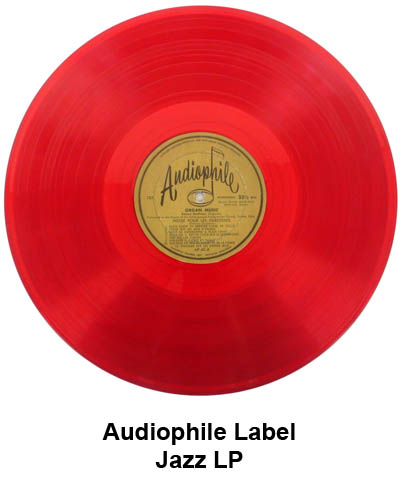 As a side note, there was a small label in operation from the late 1940s through the 1970s that called itself “
As a side note, there was a small label in operation from the late 1940s through the 1970s that called itself “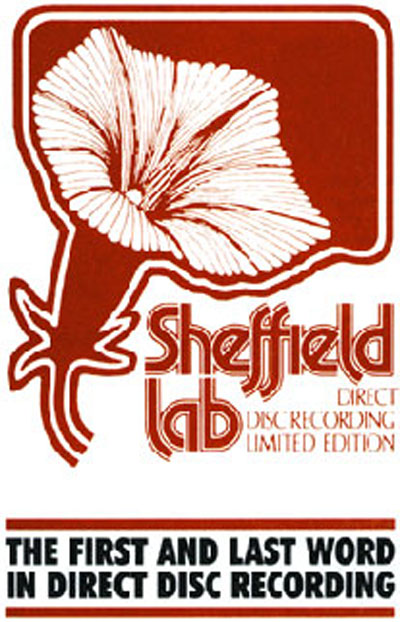 In the early 1970s, a record mastering engineer named Doug Sax and a musician named Lincoln Mayorga discovered that many of their old 78 RPM singles sounded better than newer recordings. This led to the formation of one of the earliest companies to intentionally produce audiophile records – Sheffield Lab.
In the early 1970s, a record mastering engineer named Doug Sax and a musician named Lincoln Mayorga discovered that many of their old 78 RPM singles sounded better than newer recordings. This led to the formation of one of the earliest companies to intentionally produce audiophile records – Sheffield Lab. In the late 1970s, a company called Mobile Fidelity Sound Labs, founded by Brad Miller, decided that it was time to produce audiophile records, meaning records that manufactured to sound good as the music on them, and records intended for people who actually care how their music sounds.
In the late 1970s, a company called Mobile Fidelity Sound Labs, founded by Brad Miller, decided that it was time to produce audiophile records, meaning records that manufactured to sound good as the music on them, and records intended for people who actually care how their music sounds.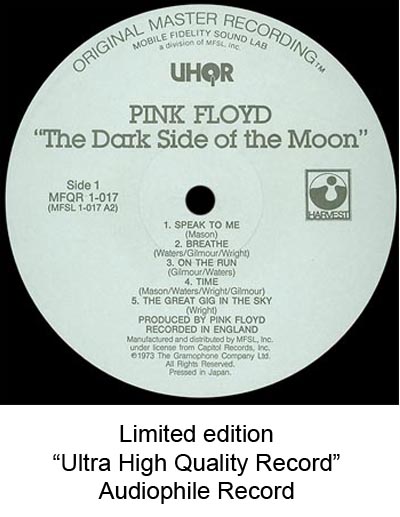 The company also made the decision to use only new, high-quality, “virgin” vinyl, as opposed to the recycled vinyl that was then in use by nearly every major record company.
The company also made the decision to use only new, high-quality, “virgin” vinyl, as opposed to the recycled vinyl that was then in use by nearly every major record company.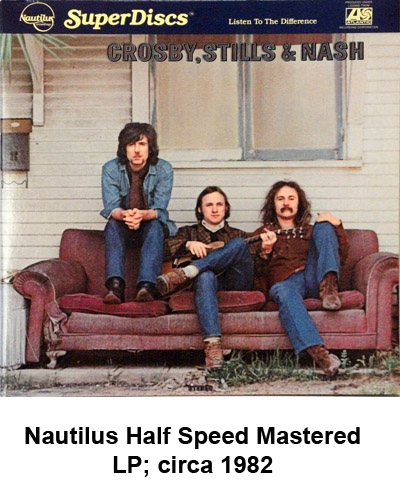 With the success of Mobile Fidelity, other companies soon joined the trend of releasing mass-produced audiophile records. Some of the early competitors were California-based Nautilus and Nashville’s Direct Disk Labs.
With the success of Mobile Fidelity, other companies soon joined the trend of releasing mass-produced audiophile records. Some of the early competitors were California-based Nautilus and Nashville’s Direct Disk Labs. Columbia’s audiophile records consisted of an odd mix of older, classic titles combined with then-new releases.
Columbia’s audiophile records consisted of an odd mix of older, classic titles combined with then-new releases.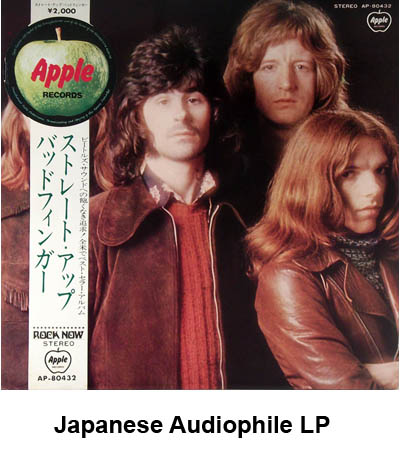 While all of this was going on, a few people quietly noticed that records imported from Japan tended to always sound better than their American counterparts.
While all of this was going on, a few people quietly noticed that records imported from Japan tended to always sound better than their American counterparts.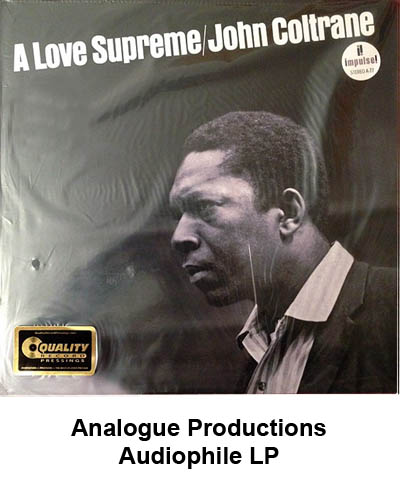 After forcing records from the market in the early 1990s, the record companies found themselves with little product to sell after consumers balked at paying high prices for compact discs and resorted instead to illegally downloading low-quality mp3 files from the Internet.
After forcing records from the market in the early 1990s, the record companies found themselves with little product to sell after consumers balked at paying high prices for compact discs and resorted instead to illegally downloading low-quality mp3 files from the Internet.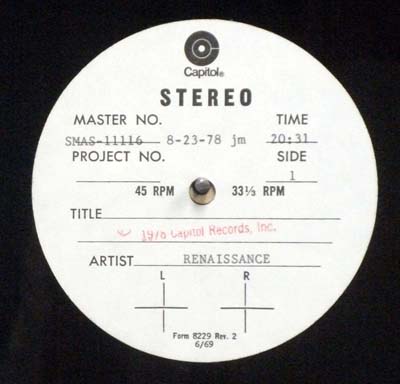 Example of an acetate label[/caption]
Example of an acetate label[/caption]
